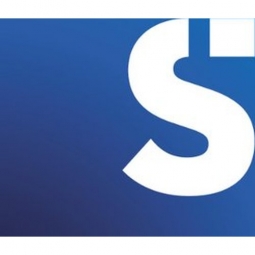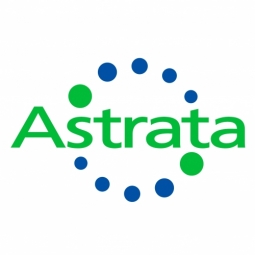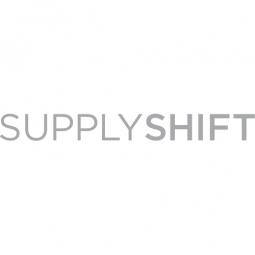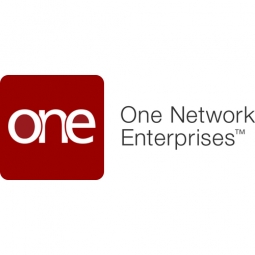Shippeo

概述
|
总部
法国
|
成立年份
2014
|
公司类型
私营公司
|
收入
< $10m
|
|
员工人数
11 - 50
|
网站
|
推特句柄
|
公司介绍
Shippeo 帮助领先的供应链利用运输来提供卓越的客户服务并实现卓越运营。其实时运输可见性平台为托运人、承运人和 4PL 提供每次交付的即时跟踪,并实现与最终客户的主动沟通。 Shippeo 成立于 2014 年,每月为 Leroy Merlin、Saint-Gobain 和 Faurecia 等市场领先公司在整个欧洲跟踪超过 40000 次交付,并连接到 600 多家承运商。
物联网解决方案
预测可见性平台Shippeo 强大的供应链可见性平台使您可以即时访问所有交付的预测性和实时信息。快速准确地预测问题可帮助您有效地管理异常以减轻其影响。
物联网应用简介
技术栈
Shippeo的技术栈描绘了Shippeo在应用基础设施与中间件, 和 功能应用等物联网技术方面的实践。
-
设备层
-
边缘层
-
云层
-
应用层
-
配套技术
技术能力:
无
弱
中等
强

Supplier missing?
Start adding your own!
Register with your work email and create a new supplier profile for your business.
实例探究.

Case Study
4flow: Enhancing Supply Chain Efficiency with Real-Time Data
4flow, a leading global provider of supply chain consulting, software and fourth party logistics (4PL) services, was facing a challenge in managing logistics networks proactively and efficiently due to a lack of real-time visibility. This lack of visibility resulted in increased costs from deviations and exceptions, such as late penalties and dispute management costs, and in worst cases, extended supply chain disruptions. Late identified delays meant the time needed to take preventative measures was lost, potentially leading to late fees and penalties. If shipping status data was not automatically exchanged between supply chain partners, time-consuming manual communication between carriers, customers and transport planners was also required. Additionally, carrier performance was difficult to manage without objective data. As a neutral 4PL that is not fleet-based, 4flow did not have access to real-time transportation data and was looking for a strong partner to provide visibility to its customers.
Case Study
Enhancing Supply Chain Visibility for Fressnapf Group with Multimodal Tracking
Fressnapf Group, Europe’s largest pet supplies retailer, faced a significant challenge in managing its vast and complex supply chain that spans from China to North America and throughout Europe. The company had no visibility of its container shipments until they arrived in Germany, which severely impacted the execution of promotions and customer satisfaction. The lack of real-time tracking information was a major issue, especially considering the company's reliance on multiple modes of transportation, including deep sea and road, for its 10,000 containers and over 25,000 truck deliveries annually. The situation was further exacerbated by fluctuations in delivery performance during the Covid-19 pandemic, highlighting the need for precise knowledge on the movement of shipments to and from distribution centers.
Case Study
Sappi: Enhancing Supply Chain Efficiency and Customer Satisfaction with IoT
Sappi Europe, a division of Sappi Limited, is a leading global provider of pulp, paper, packing, and sustainable wood fibre products and solutions. Despite its dominant position in the market, the company faced significant challenges in optimizing its supply chain and improving customer service. The increasing supply in the market resulted in overcapacity, necessitating cost reduction and a greater customer focus. Sappi also faced mounting pressures to digitize operations, with their supply chain being a key area of focus. A significant challenge was that 50% of their customer service enquiries were related to the status of shipments, demanding a considerable amount of time and administrative effort.
Case Study
Coca-Cola HBC: Streamlining Logistics Operations with Real-Time Transportation Visibility
Coca-Cola Hellenic Bottling Company (HBC), a FTSE 100 company, operates in 28 markets across three continents, generating revenues of over €7 billion annually from more than 2 billion unit cases of product. As the third largest strategic bottling partner of The Coca-Cola Company, Coca-Cola HBC’s geographical reach is vast, stretching from the west coast of Ireland to the east coast of Russia, and from the Baltics to Nigeria. However, the scale, diversity of countries, and complexity of Coca-Cola HBC’s operation creates a large administrative effort to coordinate with transport carriers. This complexity made handling exceptions time-consuming and impacted the potential to improve operational efficiency and customer satisfaction. The lack of visibility of deliveries for recipients and customers further complicated the situation, with administrative teams frequently occupied with non-value adding tasks.
Case Study
Enhancing Customer Experience Across Diverse Geographies: A Case Study on Totalenergies
Total Marketing Services, a global energy player with a presence in over 100 countries, faced a significant challenge in maintaining consistent service levels due to its vast global reach. The company's operations varied across regions due to differences in local regulations, business maturity, and IT infrastructure. A key issue was the lack of visibility on transport orders from the loading phase to the delivery phase, leading to a high volume of customer inquiries about delivery status. This not only increased administrative tasks but also negatively impacted customer satisfaction. The company's digital roadmap was also difficult to implement due to the sheer number of affiliates. Total's supply chain activity involved numerous mass flows by pipe, train, and ship, and the company needed modular solutions that could be deployed quickly and easily, work across similar business contexts, and cater to the specific needs of each country.
Case Study
Krone: Revolutionizing Trailer Transport with Real-Time Data
Krone, one of Europe's largest trailer manufacturers, was facing a growing demand for trailers with built-in Estimated Time of Arrival (ETA) prediction capabilities. This was driven by the evolving digital requirements of shippers who were increasingly expecting more smart features to be integrated into their products. The company, which generates €1.9 billion in sales annually and employs over 5,300 workers, wanted to add more world-class connected services to their portfolio. This strategy was aimed at better serving the needs of their customers in 15 key markets throughout Europe and achieving their mission to offer the most complete connected trailer service within the Logistics 4.0 world.
Case Study
Real-Time Shipment Tracking Implementation at Magnus Logistics
Magnus Logistics, a leading logistics service provider in the Baltics, was facing a significant challenge in their operations. With customer expectations constantly evolving in the supply chain and logistics world, Magnus recognized an opportunity to further digitalize operations to improve the level of service offered. A visibility gap existed across their transport operations, for own fleet as well as sub-contracted services. This made it difficult to anticipate delays and impossible to warn customers in advance. Without this information, customer satisfaction could be jeopardized and financial penalties incurred. Furthermore, many large scale customers required shipment tracking of some kind within RFPs, creating an opportunity cost associated with lack of visibility.
Case Study
Nexans: Leveraging Automation and AI for Enhanced Delivery Operations
Nexans, a global player in energy transition, faced significant challenges in managing its intricate and far-reaching value chain. The company's vast operations, which include dozens of factories across the world and thousands of deliveries at any given time, were prone to disruptions. These disruptions were often due to a lack of visibility into incoming deliveries, leading to high inventory buffers and supply chain bottlenecks. The company's customers were unable to understand where goods were or who was responsible for them, which negatively impacted Nexans's relationships with them. Nexans wanted to improve the quality of service offered to key clients, increase margin, and build strong, long-lasting customer relationships. However, simply increasing inventory buffers was not a viable solution, as the company wanted to keep working capital to a minimum. Nexans also faced bottlenecks throughout the chain, including delays in unloading deliveries when they arrived at customer sites unexpectedly. The company sought to streamline their transportation activities, improve visibility, and enhance their supply chain reliability.
Case Study
Prysmian: Building Customer-Centric Supply Chains with IoT
Prysmian Group, a world leader in cable manufacturing, energy solutions, and telecom cables and systems, operates in a highly competitive market where product offerings are similar amongst market players. This makes service a key focus for differentiation. However, Prysmian’s customer service was suboptimal due to a lack of transparency across shipments and deliveries. Without readily available data on the status of shipments, staff spent considerable time contacting their logistics department to confirm whether goods were on their way to customers. Additionally, Prysmian found it challenging to accurately forecast customer orders, which is critical for ensuring a reliable supply of product. The company relied on its customers to provide these forecasts, which varied greatly in terms of accuracy and reliability, leading to poor visibility of customer stock levels and sell-through rates. This made it difficult to predict or rapidly respond to changes in demand, making it hard to replenish inventory levels efficiently.
Case Study
Enhancing Customer Satisfaction and Reducing Costs with IoT: A Case Study on Rubix
Rubix, Europe's largest supplier of industrial maintenance, repair and overhaul (MRO) products and services, faced a significant challenge in improving customer satisfaction and reducing operational costs. The company, with 650 locations across 23 European countries, employs over 8,500 employees and serves more than 220,000 customers. However, the company's annual customer net promoter score (CNPS) survey revealed that customers desired better visibility of their order statuses, including access to shipping URLs, event information, and delivery confirmation. This lack of visibility impacted a significant portion of Rubix's 3,000 customer service staff across Europe, who had to handle delivery inquiries over the phone, requiring further inquiries with carriers and drivers. Furthermore, many of Rubix's customers operate large-scale assembly lines, relying on on-time delivery of critical components daily to ensure efficient operations and high standards of quality.
Case Study
Eckes-Granini Enhances Customer Experience and Reduces Carbon Footprint with IoT
Eckes-Granini, a leading European producer of fruit juice, was facing a significant challenge in its distribution process. The company's strict slot management rules imposed by retail clients were resulting in high penalties each year. Additionally, the company was making a large number of empty runs for return journeys, which not only increased costs but also contributed to CO2 emissions. The company was looking for a solution that could streamline its operations, increase carrier efficiency, reduce loading times, and lower its carbon footprint.
Case Study
Ewals Cargo Care: Enhancing Logistics Services through Real-Time Visibility
Ewals Cargo Care, a full-service logistics player, was facing challenges in maintaining real-time visibility of their shipments. The company, which handles approximately 2,750 shipments each day from 30 offices across 14 countries, was struggling with delays, port congestion, and the impact of the pandemic. Despite having equipped their own fleet of trucks with GPS, the company was unable to maintain a centralized platform to aggregate all road visibility data due to the use of different onboard telematics systems by their subcontractors. This lack of a central platform led to visibility gaps and inaccurate information on loading, delivery, delays, and dwell times. The company recognized the need for real-time shipment tracking capabilities to meet increasing competitive pressures and changing customer service level expectations.
Case Study
4FLOW: Enhancing Supply Chain Efficiency with Real-Time Data
4flow, a leading global provider of supply chain consulting, software and fourth party logistics (4PL) services, was facing a significant challenge. The company was dealing with rapidly increasing deviations from previously planned transport processes. Early detection of these deviations was crucial to avoid additional costs and maintain efficiency. However, without real-time data, achieving absolute supply chain visibility was a daunting task. As a neutral 4PL that is not fleet-based, 4flow did not have access to real-time transportation data. The lack of visibility resulted in inefficiencies and increased costs from deviations and exceptions, such as late penalties and dispute management costs. In the worst cases, it led to extended supply chain disruptions. Late identified delays meant the time needed to take preventative measures was lost, potentially leading to late fees and penalties. Manual communication between carriers, customers and transport planners was also required if shipping status data was not automatically exchanged between supply chain partners.
Case Study
Increasing Supply Chain Resilience in the Automotive Industry: A Case Study of Faurecia
Faurecia Seating, the global leader in automotive seating components and complete seat design and assembly, faced significant challenges in managing its highly complex supply chain. The company, which operates across 74 production sites in 23 countries, was grappling with unexpected carrier costs due to waiting times or extra distances travelled by carriers. Additionally, the disruption in the supply of components led to costly production line halts. The company also incurred high penalties for unanticipated late deliveries. These challenges not only affected the company's profitability but also its customer satisfaction levels, as its customers demanded reliable and consistent deliveries of seat parts to sustain their Just-In-Time (JIT) manufacturing processes.
同类供应商.

Supplier
Astrata
The Astrata Group is a global leader in Enterprise Management Software and Advanced Location-Based IT solutions. Headquartered in Singapore and with major operations and offices in Europe, AME and Asia-Pacific, Astrata serves MNC, enterprise and government customers spanning numerous regions and industry sectors.Astrata designs, develops and operates its proprietary software and hardware technology completely in-house. Astrata has built solutions ranging from National Security and Public Safety Systems to Comprehensive Enterprise Management Software to Advanced Fleet Management Systems on its powerful and agile technology platforms:•ADAMS™ — Cutting Edge Enterprise Management Software•GLS™ / GLSi™ / Fleetvisor™ — Advanced Location Based Backend Software and Web Portals•GLP™ Series — Best-in-Class On Board Computer HardwareEnterprise and Governments rely on Astrata’s solutions to manage and optimize operations, increase security and safety, and increase efficiency and profitability.

Supplier
Captus Technologies LLC
Captus Technologies LLC is a premier Software Development firms that offer you outstanding IT services in USA and India. With years of experience, We helped businesses to develop their dream software. We also offer Mobile app development and web development services. Our developers team efficiently build and executes all aspects of your software projects to ensure for its success and growth. We have successfully developed more than 1100+ brands across various countries.With customer-centric approach, We are dedicated to providing innovative solutions that deliver your businesses to new heights. Our main objective is to offer potential solutions that help you to achieve your online goals. For Hire Software Developers India, Email us at info@captus-technologies.com

Supplier
SupplyShift
SupplyShift is a secure, cloud-based enterprise supply chain management platform for companies with many suppliers to reduce risk and enhance visibility and responsibility in supply chains. SupplyShift encourages competition and information sharing to drive visibility and responsibility improvement. Buyers collect and analyze supplier information and risk profiles through SupplyShift, while suppliers get a dashboard that tells them where they stand compared to their industry peers. Buyers gain access to more responsible suppliers through the cloud-based sharing of information, and suppliers can access information about how to improve.Key features of SupplyShift:>> Provides a system to collect multi-tier supply chain information based on custom scorecards or existing standards. >> Enables buyers to flexibly analyze information collected from suppliers. >> Incentivizes competition among suppliers to drive supply chain improvements by making anonymous supplier scores visible to all suppliers within a sector or product category. >> Facilitates supplier improvement by providing a system for suppliers to share information about best practices and actions taken to reduce impact. >> Expands options for responsible sourcing by allowing buyers to compare their own suppliers with anonymous scores of other suppliers in the system within the same sector or product category. >> Improves data quality: (a) buyers use internal algorithms to identify outliers; (b) suppliers upload and buyers view documentation and verification information; (c) buyers can contract third party verification of data at an additional cost.

Supplier
One Network
One Network’s supply chain management solutions are a comprehensive suite of supply chain solutions that are tightly integrated, work together intelligently, and run in the cloud. These supply chain solutions are part of The Real Time Value Network.The Real Time Value Network is a multi-party cloud platform from One Network that exploits the latest trends remaking consumer and business technology, including the cloud, many-to-many networks, social networking, big and fast data, and mobile apps.







